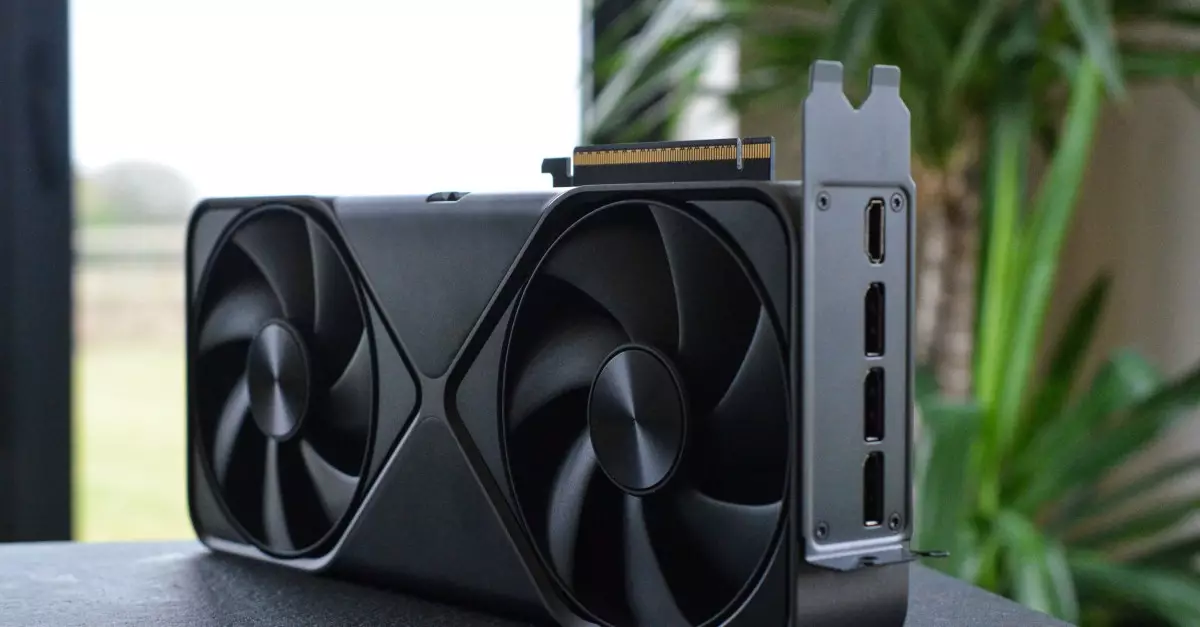The launch of Nvidia’s RTX 5090 graphics card has been met with considerable excitement but also significant discontent. Priced at a staggering $1,999, the hype surrounding the RTX 5090 was palpable, yet as the launch unfolded, the excitement was dampened by a stark reality: a substantial shortage of available units. This discrepancy between customer anticipation and product availability has led many to label the launch as a “paper launch,” where demand far outweighs supply.
Retailers across the United States have reported alarming stock levels for the RTX 5090. According to various accounts, many consumers stood outside storefronts, only to discover that the anticipated stock was either already sold out or disappointingly low. Various locations were noted for their disparity in inventory; one Micro Center in Tustin, California appeared to have a more generous supply, while numerous others were left with mere scraps. Enthusiasts tracked the availability of these cards through forums, yet their experiences were often marked by frustration and disappointment.
Many eager buyers invested days in waiting in long lines, hoping for the chance to own the latest technology. However, their efforts frequently culminated in futility. Reports from Reddit revealed not only the excitement of those who managed to secure a purchase but also a deluge of complaints regarding inventory shortages and perceived mismanagement of the launch process.
In comparison to Nvidia’s RTX 5080, which also faced stock challenges upon its release, the RTX 5090’s availability was significantly worse. While some retailers had manageable stock of the RTX 5080 on launch day, the 5090 saw many leading system integrators receiving only a handful or even a solitary card. This impeded the ability for consumers to obtain the product through traditional channels, which was frustratingly aggravated by the rapid sell-outs at major retailers like Best Buy and Amazon.
The ensuing rush to acquire the RTX 5090 facilitated a rising scalping issue that exacerbated the problem. With the help of opportunistic resellers, prices on secondary markets skyrocketed, with figures reaching $5,000 or even more. Notably, a particularly egregious listing caught the attention of technology commentators, where an RTX 5090 was listed for as high as $5,800 soon after its launch. This kind of artificial inflation only serves to alienate genuine gamers and enthusiasts seeking to enhance their gaming experience without succumbing to the whims of the resale market.
Looking Ahead: The Solution to Stock Problems?
With retailers resorting to preorder listings and offering consumer warnings of extended wait times for stock, the current landscape of graphics card acquisition appears bleak. For instance, retailers such as Scan in the UK have signaled that some RTX 5090 shipments won’t arrive until late May, leading to an overwhelming sense of disillusionment. Nvidia’s failure to meet demand effectively raises questions about production capabilities and strategy.
As the dust settles on this launch and Nvidia grapples with its inventory issues, consumers can only hope for a more stable market in the near future. The desire for cutting-edge technology is strong, but it must be matched by availability to cultivate a satisfied and loyal customer base. Until then, those on the quest for the RTX 5090 will need to navigate a landscape fraught with scarcity and inflated prices.

